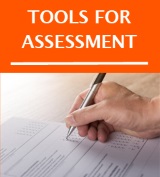Pain Management, Opioid Safety, and PDMP (PMOP)
VA CLINICIAN AND RESEARCHER - Tools for Assessment and Recruitment
Research Tools
Chronic pain is complex and affects multiple areas of functioning. As such, there are a number of instruments to measure chronic pain and related constructs. The list below is not exhaustive, but provides commonly used measures across a number of domains related to chronic pain.
Overall Pain
| Measure | Availability | Citation | Measure | Recommended |
| Brief Pain Inventory- Short Form | $ (with possible exceptions) | Cleeland, C. S. (1989). Measurement of pain by subjective report. Advances in pain research and therapy, 12, 391-403. Krebs, E. E., Lorenz, K. A., Bair, M. J., Damush, T. M., Wu, J., Sutherland, J. M., ... & Kroenke, K. (2009). | symptomresearch@ mdanderson.org |
|
| open use | Development and initial validation of the PEG, a three-item scale assessing pain intensity and interference. Journal of general internal medicine, 24(6), 733-738. | |||
| Short-form McGill Pain Questionnaire* | open use | Melzack, Ronald. "The short-form McGill pain questionnaire." Pain 30.2 (1987): 191-197. | ||
| PROMIS Numeric rating Scale | open use | https://assessmentcenter.net/ | NIH |
Pain Interference
| Measure | Availability | Citation | Measure | Recommended |
| Defense and Veterans Pain Rating Scale (DVPRS) Complete Assessment | open use | A 5-item instrument to assess a patient’s pain experience, including pain intensity and the biopsychosocial impact of pain (influence on activity, sleep, mood, and level of stress) | ||
| DVPRS Graphic- DVPRS Assessment | The DVPRS is a graphic tool clinicians can use to facilitate self-reported pain diagnoses from patients. | |||
| Pain Outcomes Questionnaire: The POQ is an outcomes package consisting of intake, post-treatment, and follow-up questionnaires that was developed to assess several key domains of pain treatment outcomes. |
The POQ contains six core subscales that assess pain intensity, pain-interference in activities of daily living (ADLs) and mobility, negative affect, activity diminishment, and pain related fear. • POQ – VA/S/INPT: Intake (pdf) • POQ – VA/S/INPT: Time 2 (pdf) • POQ - VA: Admission – Scoring Template (pdf) • POQ - VA: Discharge – Scoring Template (pdf) • Development and Validation of the Pain Outcomes (pdf) |
|||
| West Haven Yale Multidimensional Pain Inventory (WHYMPI) | open use | Kerns, R. D., Turk, D. C., & Rudy, T. E. (1985). The west haven-yale multidimensional pain inventory (WHYMPI). Pain, 23(4), 345-356 | IMMPACT | |
| PROMIS Pain Interference | open use | https://assessmentcenter.net | NIH |
Disability
| Measure | Availability | Citation | Measure | Recommended |
| Roland Morris Disability Questionnaire (RMDQ*) | open use | Roland, M., & Morris, R. (1983). A Study of the Natural History of Back Pain: Part I Development of a Reliable and Sensitive Measure of Disability in Low-Back Pain. spine, 8(2), 141-144.Fairbank, J. C., Couper, J., Davies, J. B., & O’brien, J. P. (1980). Krebs, E. E., Lorenz, K. A., Bair, M. J., Damush, T. M., Wu, J., Sutherland, J. M., ... & Kroenke, K. (2009). https://www.rmdq.org/* | ||
| Oswetry Disability Index (ODI)* | open use | Development and initial validation of the PEG, a three-item scale assessing pain intensity and interference. Journal of general internal medicine, 24(6), 733-738. | ||
| open use | Melzack, Ronald. "The short-form McGill pain questionnaire." Pain 30.2 (1987): 191-197. | |||
| Pain Disability Index (PDI) | open use | The Pain Disability Index: psychometric and validity data. Arch Phys Med Rehabil, 68(7), 438-41. |
Depression
| Measure | Availability | Citation | Measure | Recommended |
| Beck's Depression Inventory (BDI) | $ | Beck, A. T., Steer, R. A., & Brown, G. K. (1996). Manual for the Beck Depression Inventory-II. 1996. San Antonio, TX: Psychological Corporation, 2. Heuchert JP, McNair DM. Profile of Mood States 2nd edition. | IMMPACT | |
| Profile of Mood States | $ | North Tonawanda, NY: Multi-Health Systems; 2012. Kroenke, K., Spitzer, R. L., & Williams, J. B. (2001). | IMMPACT | |
| Patient Health Questionnaire (PHQ-9) | open use | The PHQ‐9: validity of a brief depression severity measure. Journal of general internal medicine, 16(9), 606-613 Radloff, L. S. (1977). | ||
| Clinical Epidemiological Scale - Depression | open use | The CES-D scale: A self-report depression scale for research in the general population. Applied psychological measurement, 1(3), 385-401. Zigmond, A. S., & Snaith, R. P. (1983). | ||
| Hospital Anxiety and Depression Scale (HADS) | open use | The hospital anxiety and depression scale. Acta psychiatrica scandinavica, 67(6), 361-370. | ||
| PROMIS Short Form v1.0 - Depression | open use | https://assessmentcenter.net/ |
Sleep
| Measure | Availability | Citation | Measure | Recommended |
| Insomnia Severity Index | open use | Bastien, C. H., Vallières, A., & Morin, C. M. (2001). Validation of the Insomnia Severity Index as an outcome measure for insomnia research. Sleep medicine, 2(4), 297-307. Weaver TE, Laizner AM, Evans LK, et al. | ||
| Functional Outcomes of Sleep Questionairre-10 (FOSQ-30/FOSQ-10) | open use | An instrument to measure functional status outcomes for disorders of excessive sleepiness. Sleep 1997;20:835-43. Buysse DJ, Reynolds CF, Monk TH, Berman SR, Kupfer DJ | Use with permission from developer | |
| Pittsburgh Sleep Quality Index (PSQI) | open use | The Pittsburgh Sleep Quality Index: A new instrument for psychiatric practice and research. Psychiatry Research 28:193-213, 1989. | With permission: academic research and individual clinical practice: free of charge | |
| Medical Outcomesdy Sleep Index | open use | Hays RD, Martin SA, Sesti AM, et al. Psychometric properties of the Medical Outcomes Study Sleep measure. Sleep Med.2005;6:41–44. |
Pain Catastrophizing
| Measure | Availability | Citation | Measure | Recommended |
| Pain Catastrophizing Scale (PCS | open use | Sullivan, M. J., Bishop, S. R., & Pivik, J. (1995). The pain catastrophizing scale: development and validation. Psychological assessment, 7(4), 524. |
Opioid Use Disorder Severity
| Measure | Availability | Citation | Measure | Recommended |
| Drug Abuse Screening Test (DAST-10) | open use | Skinner, H. A. (1982). The drug abuse screening test. Addictive behaviors, 7(4), 363-371 Miele, G. M., Carpenter, K. M., Cockerham, M. S., Trautman, K. D., Blaine, J., & Hasin, D. S. (2000). | ||
| Substance Dependence Severity Scale (SDSS) | open use | Substance Dependence Severity Scale (SDSS): reliability and validity of a clinician-administered interview for DSM-IV substance use disorders. Drug and alcohol dependence, 59(1), 63-75. | ||
| Revised Screener and Opioid Assessment for Patients with Pain (SOAPP-R) | open use |
Kinesophobia
| Measure | Availability | Citation | Measure | Recommended |
| Tampa Scale of Kinesiophobia (TSK) | open use | Miller, R. P., Kori, S. H., & Todd, D. D. (1991). The Tampa Scale: a measure of kinisophobia. The Clinical Journal of Pain, 7(1), 51. Waddell, G., Newton, M., Henderson, I., Somerville, D., & Main, C. J. (1993). | ||
| Fear Avoidance Beliefs Questionnaire (FABQ) | open use | A Fear-Avoidance Beliefs Questionnaire (FABQ) and the role of fear-avoidance beliefs in chronic low back pain and disability. Pain, 52(2), 157-168. |
Quality of Life
| Measure | Availability | Citation | Measure | Recommended |
| SF-36 Health Survey v2.0 | open use | Gandek, B., Sinclair, S. J., Kosinski, M., & Ware Jr, J. E. (2004). Psychometric evaluation of the SF-36® health survey in medicare managed care. Health care financing review, 25(4), 5. Ware, J., Kosinski, M., & Keller, S. D. (1995). | ||
| SF-12 Health Survey v2.0 | open use | How to score the SF-12 physical and mental health summary scales Boston. MA: The Health Institute, 2. Whoqol Group. (1998). | ||
| WHO Quality of Life - BREF | open use | Development of the World Health Organization WHOQOL-BREF quality of life assessment. Psychological medicine, 28(3), 551-558. |
Pain Measures - Additional
| Measure | Availability | Citation | Measure | Recommended |
| Pain Self-Efficacy Questionnaire (PSEQ) | open use | Pain Self-Efficacy Questionnaire (PSEQ) Nicholas, M. K. (2007).The pain self‐efficacy questionnaire: Taking pain into account. European journal of pain, 11(2), 153-163. The Chronic Pain Values Inventory (CPVI) McCracken, L. M. & Yang, S. (2006). | ||
| The Chronic Pain Values Inventory (CPVI) | open use | The role of values in a contextual cognitive-behavioral approach to chronic pain. Pain, 123, 137-145. Chronic Pain Acceptance Questionnaire – Revised (CPAQ-R) McCraken, L. M., Vowles, K. E. & Eccleston, C. (2004). |
||
| Chronic Pain Acceptance Questionnaire – Revised (CPAQ-R) | open use | Acceptance of chronic pain: component analysis and a revised assessment method. Pain, 107, 159-166. |
Researcher and Clinician - Resource Topics of Interest
 |
 |
 |
 |
Literature Alerts for VA Staff
The VA Library Network will provide VA staff an index of recent articles related to opioids and many other areas of interest right to your work mailbox. If you are interested in subscribing to this alert click here.
If you have questions or suggestions for pain-related resources to share, please send an email to VHA Pain Management Webmaster Group. Please do not submit any personal healthcare information. Questions about personal care should be directed to the local VA facility.
Disclaimer: *Links will take you outside of the Department of Veterans Affairs Website. VA does not endorse and is not responsible for the content of the linked websites.




















